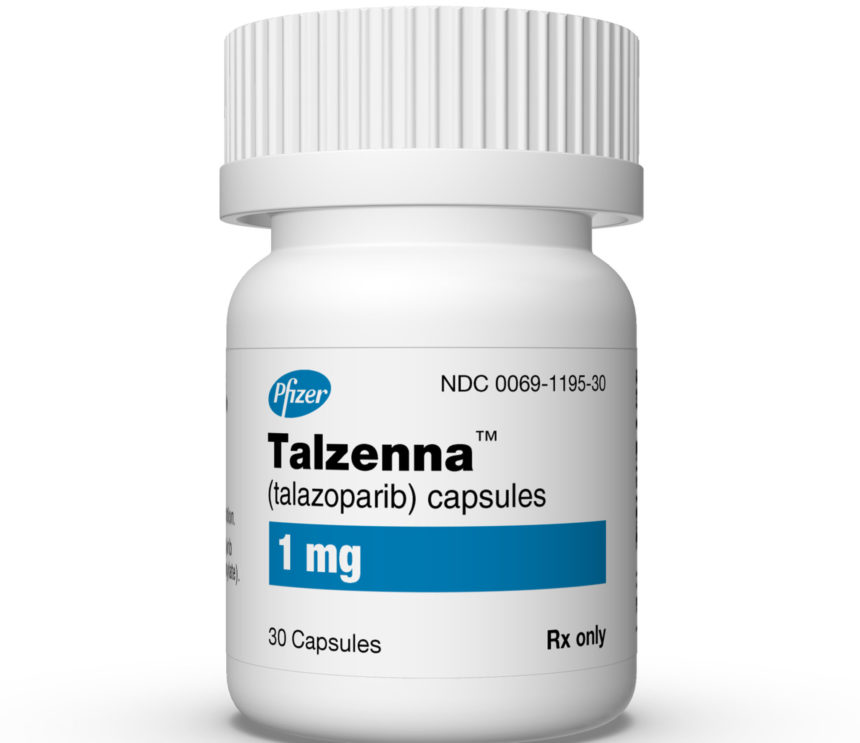Talzenna (talazoparib) vs Margenza (margetuximab-cmkb)
Talzenna (talazoparib) vs Margenza (margetuximab-cmkb)
Talzenna (talazoparib) is a PARP inhibitor used specifically to treat certain patients with advanced breast cancer who have inherited BRCA mutations. Margenza (margetuximab-cmkb), on the other hand, is a monoclonal antibody designed to target HER2-positive breast cancer, which is a different subset of breast cancer cells that overexpress the HER2 protein. The choice between Talzenna and Margenza would depend on the patient's specific type of breast cancer, as determined by genetic testing and the presence of certain biomarkers, and should be made in consultation with an oncologist.
Difference between Talzenna and Margenza
| Metric | Talzenna (talazoparib) | Margenza (margetuximab-cmkb) |
|---|---|---|
| Generic name | Talazoparib | Margetuximab-cmkb |
| Indications | BRCA-mutated HER2-negative locally advanced or metastatic breast cancer | Metastatic HER2-positive breast cancer in combination with chemotherapy |
| Mechanism of action | Poly (ADP-ribose) polymerase (PARP) inhibitor | Anti-HER2 monoclonal antibody |
| Brand names | Talzenna | Margenza |
| Administrative route | Oral | Intravenous |
| Side effects | Fatigue, anemia, nausea, neutropenia, headache, vomiting, hair loss, diarrhea, decreased appetite | Fatigue, nausea, diarrhea, vomiting, constipation, headache, fever, joint pain, extremity pain, back pain, dizziness |
| Contraindications | Hypersensitivity to talazoparib | Hypersensitivity to margetuximab-cmkb or its excipients |
| Drug class | Poly (ADP-ribose) polymerase inhibitor | Monoclonal antibody |
| Manufacturer | Pfizer | MacroGenics, Inc. |
Efficacy
Talzenna (Talazoparib) Efficacy in Breast Cancer
Talzenna (talazoparib) is a poly ADP-ribose polymerase (PARP) inhibitor that has shown efficacy in the treatment of breast cancer, particularly in patients with germline BRCA-mutated (gBRCAm), HER2-negative locally advanced or metastatic breast cancer. Talazoparib's mechanism of action involves exploiting the DNA repair weaknesses inherent in BRCA-mutated cells, leading to the accumulation of DNA damage and ultimately cell death. The EMBRACA trial, a phase III study, demonstrated that talazoparib significantly prolonged progression-free survival (PFS) compared to standard chemotherapy in patients with gBRCAm HER2-negative advanced breast cancer. Patients treated with talazoparib experienced a median PFS of 8.6 months compared to 5.6 months in those receiving chemotherapy.
Margenza (Margetuximab-cmkb) Efficacy in Breast Cancer
Margenza (margetuximab-cmkb) is a monoclonal antibody that targets the HER2/neu receptor, a protein overexpressed in certain types of breast cancer. Margetuximab-cmkb is designed to stimulate the immune system more effectively than the current standard of care, trastuzumab, due to its engineered Fc region. The SOPHIA study, a phase III clinical trial, evaluated the efficacy of margetuximab in combination with chemotherapy in patients with HER2-positive metastatic breast cancer who had previously received anti-HER2 therapies. The study found that the combination of margetuximab and chemotherapy resulted in a statistically significant extension of PFS compared to trastuzumab and chemotherapy. The median PFS for patients receiving margetuximab was 5.8 months, compared to 4.9 months for those on trastuzumab.
Both Talzenna and Margenza represent advancements in targeted therapies for breast cancer, offering new options for patients with specific genetic and protein expressions. Their efficacy in improving PFS highlights the importance of personalized medicine in the management of breast cancer. However, it is crucial for healthcare professionals to consider individual patient factors, including genetic mutations, previous treatments, and overall health status, when determining the appropriateness of these therapies.
It should be noted that while these treatments have shown promise in clinical trials, the overall survival benefit and long-term outcomes are still being evaluated. As with all cancer therapies, the efficacy of Talzenna and Margenza must be weighed against potential side effects and the patient's quality of life. Ongoing research and post-marketing surveillance continue to provide valuable data on the effectiveness and safety of these medications in the broader patient population.
Regulatory Agency Approvals
Talzenna
-
European Medical Agency (EMA), European Union

-
Food and Drug Administration (FDA), USA

-
Therapeutic Goods Administration (TGA), Australia

Margenza
-
Food and Drug Administration (FDA), USA

Access Talzenna or Margenza today
If Talzenna or Margenza are not approved or available in your country (e.g. due to supply issues), you can access them via Everyone.org.
How it works

Make an enquiry
Choose the medicine you want to buy, answer a couple of questions, and upload your prescription to speed things up. We’ll get back to you within 24 hours.


Make an enquiry
Choose the medicine you want to buy, answer a couple of questions, and upload your prescription to speed things up. We’ll get back to you within 24 hours.


Breeze through the paperwork
We'll guide you through the required documents for importing unapproved medicine, ensuring you have all the necessary information.


Get a personalized quote
We’ll prepare a quote for you, including medicine costs and any shipping, administrative, or import fees that may apply.


Receive your medicine
Accept the quote and we’ll handle the rest - sourcing and safely delivering your medicine.

Some text on this page has been automatically generated. Speak to your physician before you start a new treatment or medication.
Let's talk
If you have any questions, call us or send us a message through WhatsApp or email:
Contact us




